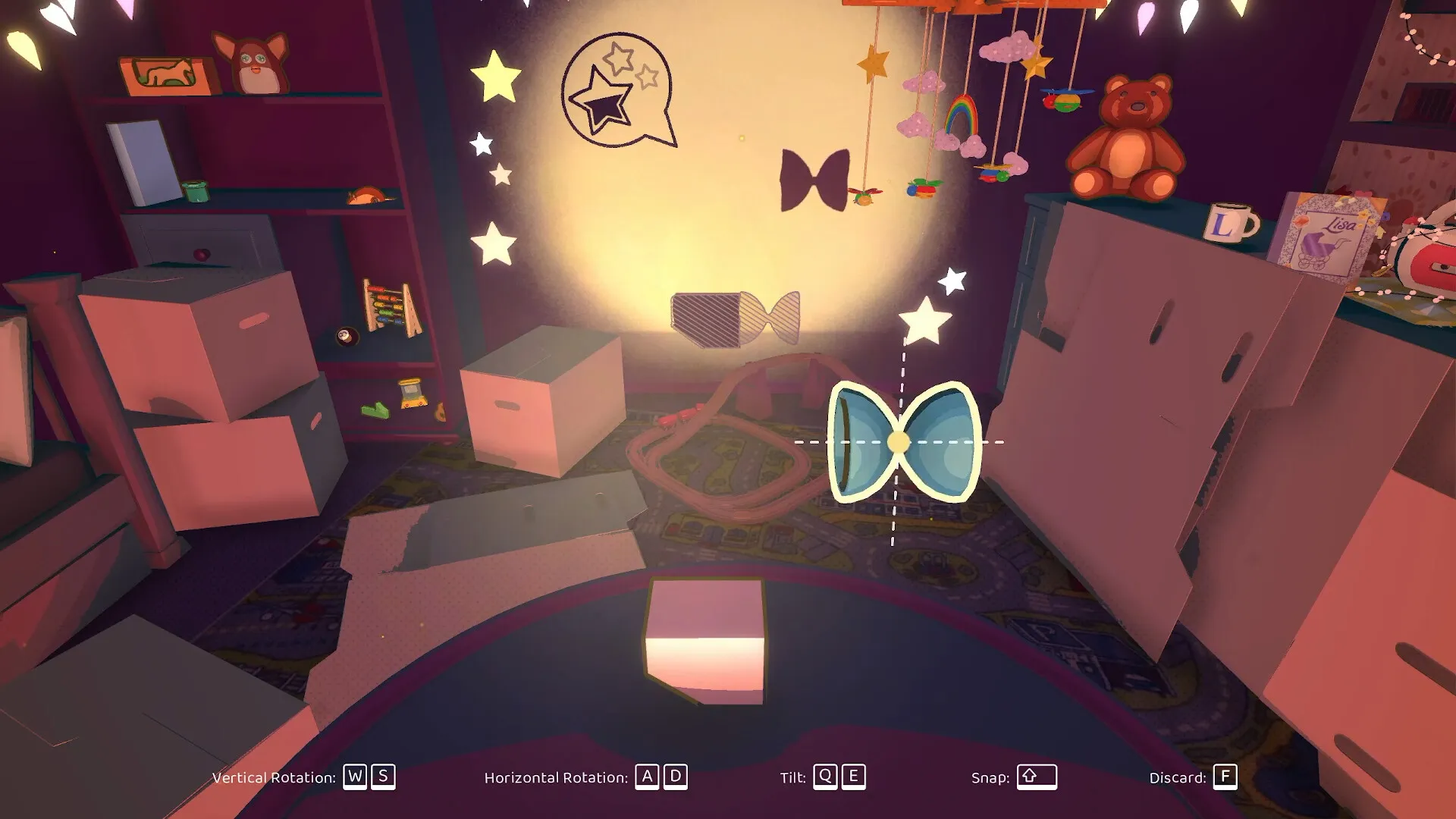There is a quiet, universal magic in the childhood act of making shadow puppets. In a darkened room, with just a beam of light, our hands could become anything: a soaring bird, a barking dog, a timid rabbit. It’s an act of pure, simple imagination.
It is this specific, deeply-rooted nostalgia that Projected Dreams, the debut title from Swiss-based developer Flawberry Studio, so elegantly captures and transforms into a full experience. This is a cozy puzzle game at its heart, but its mechanics serve a greater narrative purpose. We are invited into the world of Senka, a young girl who discovers her mother Lisa’s old photo album. The pages are filled with blurry, indistinct memories.
To bring them into focus, Senka must use the toys and trinkets scattered around her room to cast shadows on the wall, recreating the silhouettes from each picture. What begins as a simple play of light evolves into a profound and wordless narrative journey. We are not just solving puzzles; we are piecing together a life, exploring the bonds of family, the bittersweet passage of time, and the powerful stories that can be told without a single word.
Illuminating Mechanics
The primary gameplay loop in Projected Dreams is wonderfully intuitive. Each level presents a new photograph, which in turn projects a dotted silhouette onto the wall. Your task is to rummage through the environment—pulling items from drawers, boxes, and even a Halloween coffin—and then rotate, position, and stack them until their combined shadow matches the target.
While this foundation is familiar to anyone who has played a physics-based puzzler, the game’s true brilliance lies in its rejection of a single, rigid solution. This is not a game of finding the one correct key for a lock. Instead, it offers a creative sandbox. You can meticulously find the specific, intended objects and arrange them for a perfect, three-star match.
Or, you can embrace the chaos, slinging a rubber duck, a coffee cup, and a baseball bat into a configuration that the game deems “good enough” to proceed. This freedom fosters a sense of playfulness that many sterile puzzle games lack.
Just as this loop might begin to feel familiar, the game smartly introduces new layers to its mechanics. The setting shifts through chapters, from a cozy bedroom to an underwater scene or a space station, each with a new collection of objects to manipulate.
More importantly, your tools for manipulation evolve. One chapter might introduce a second light source, forcing you to manage two overlapping shadows simultaneously. Another gives you the ability to use “ghost” projections that make objects invisible, or a special tool resembling octopus tentacles that lets you glue items together.
This steady trickle of new ideas prevents stagnation and constantly forces you to rethink your approach, much like how games such as Portal introduce new mechanics to expand the puzzle-solving vocabulary. While the game supports controllers, the precision needed for stacking and fine-tuning object placement makes a mouse and keyboard the far superior control method.
A Narrative Without Words
Where Projected Dreams truly excels is in its storytelling. It delivers its entire emotional arc without a single line of dialogue or text, a feat that places it in the company of narrative-forward titles like Journey or Unpacking. The story of Lisa’s life unfolds through beautifully hand-drawn illustrations and short animated vignettes that are unlocked after each puzzle is solved.
We watch her grow from a small child to a teen and then an adult, witnessing moments of joy, challenge, and quiet contemplation. This wordless method is incredibly effective; by leaving the specific details unspoken, it invites players to project their own emotions and experiences onto the narrative, making the story feel both universal and deeply personal.
This heartfelt narrative is wrapped in a perfectly suited presentation. The game’s visual style is defined by a soft, warm, autumnal color palette and a craft-paper aesthetic that gives the world a tangible, handcrafted feel. The 3D objects themselves are rendered with a child-like simplicity, appearing as toys from a bygone era, which enhances the themes of memory and childhood.
Nostalgic items like Game Boys and robotic hamster-owls make appearances, grounding the experience in a specific sense of the past. The audio design is a crucial component of this atmosphere. The gentle, ambient score by composer Floris Demandt is the perfect companion for thoughtful puzzle-solving. Hidden within certain levels are collectible cassette tapes, which can be played on an in-game cassette player to change the music, adding a small but satisfying layer of discovery and personalization to the soundscape.
Wobbly Shadows
For all its emotional depth, Projected Dreams is designed to be a relaxing, low-stress game. The puzzles do ramp up in complexity, moving from simple shapes to mind-bending constructions, but the game is remarkably forgiving. A three-star rating system is in place to grade the accuracy of your shadow, but you only need to achieve a single star to advance the story.
This design choice is critical, as it ensures that you are never truly stuck. For those moments of complete confusion, the back of each photograph can be flipped over to reveal the intended solution, acting as a built-in hint system that prevents frustration from derailing the experience. This accessibility makes it an ideal entry point for those new to puzzle games.
However, the game’s cozy vibe is occasionally disrupted by a finicky physics engine. Objects can feel weightless and unpredictable. You might spend several minutes meticulously constructing a delicate tower of items, only to watch it all come tumbling down because one piece bounced off another in a way that defies logic. These moments can be jarring.
Certain mechanics, particularly the feature for sticking objects together, are introduced with little explanation, requiring a period of stubborn trial and error to fully grasp. The game is also a brief experience, clocking in at around three to five hours. While replay value exists for completionists aiming to get three stars on every puzzle or find every collectible cassette, the primary draw remains the short, sweet, and emotionally resonant story it tells.
The Review
Projected Dreams
Projected Dreams is a deeply heartfelt and wonderfully creative puzzle game that succeeds on the strength of its beautiful, wordless narrative and charming presentation. Its open-ended puzzle design encourages genuine creativity, making the journey of piecing together a life's story feel personal and rewarding. While the experience is sometimes hampered by a finicky physics engine that can lead to moments of frustration, the game’s emotional core and artistic vision shine through its minor technical flaws. It’s a short, sweet, and memorable journey into the heart of a family.
PROS
- A touching and effective wordless narrative.
- Beautiful, cozy art style and soothing soundtrack.
- Creative puzzle-solving with multiple solutions.
- A forgiving difficulty curve that keeps frustration low.
CONS
- The physics engine can feel unpredictable and "janky."
- Some advanced mechanics are not clearly explained.
- Relatively short playtime.

















































